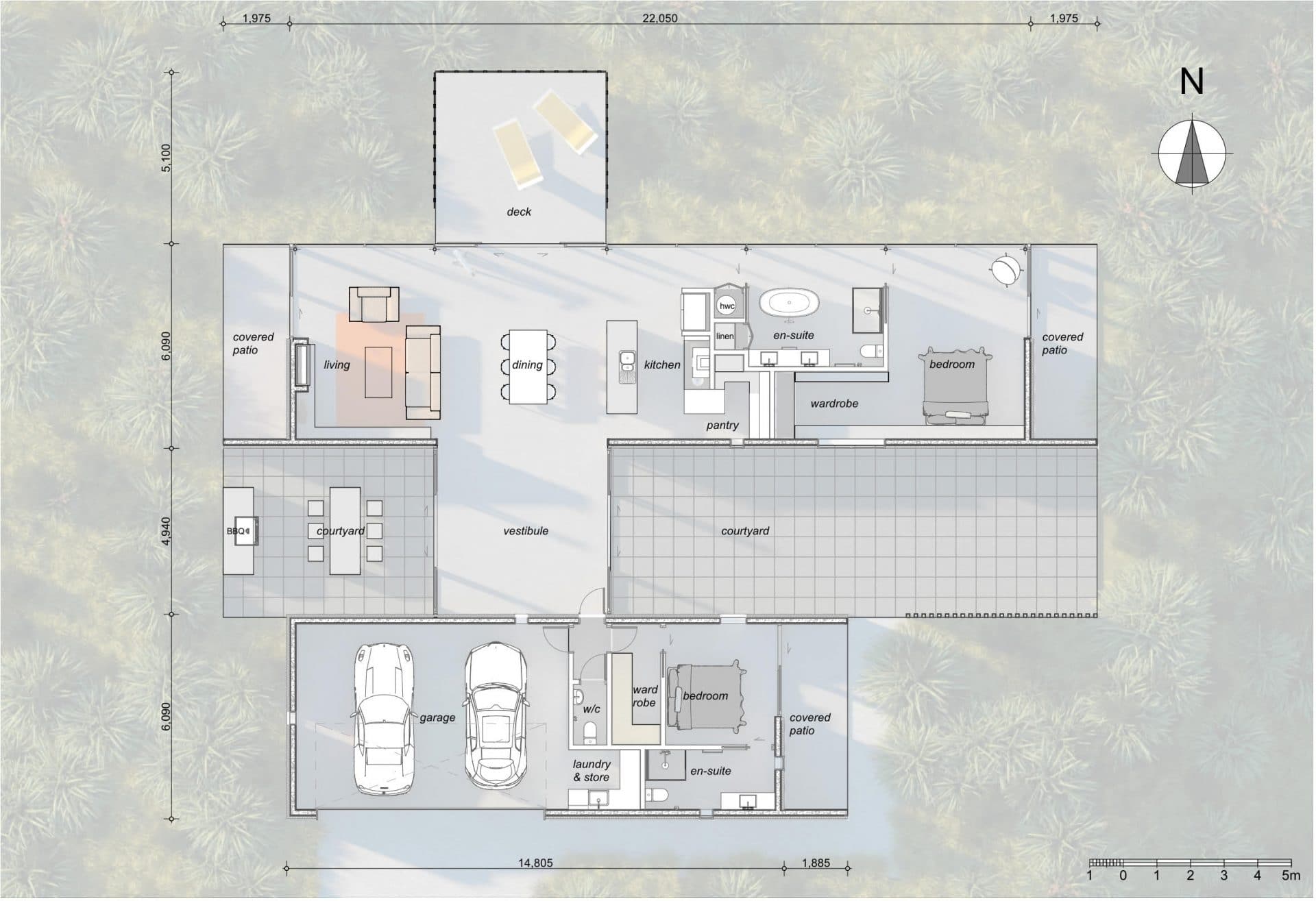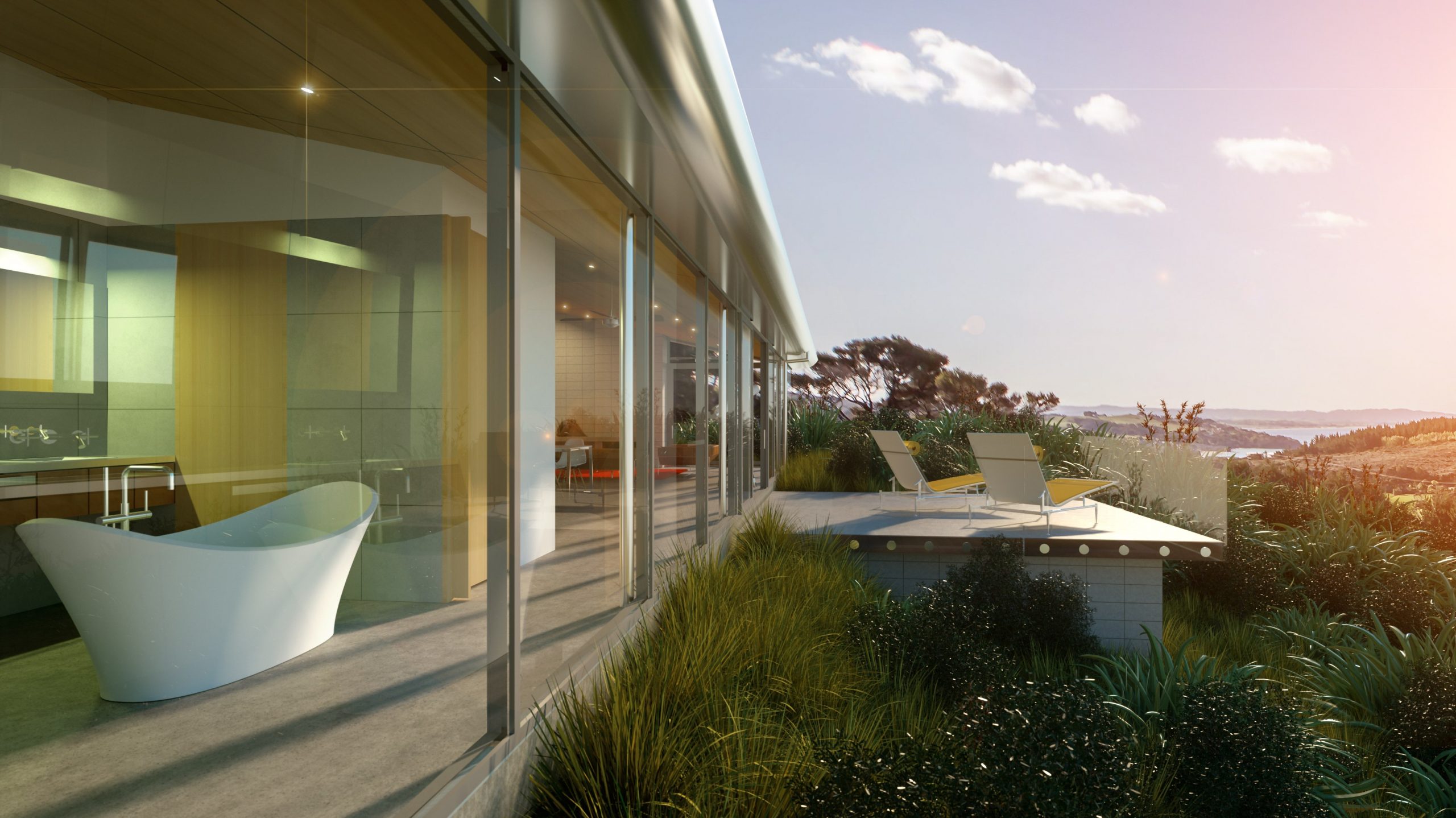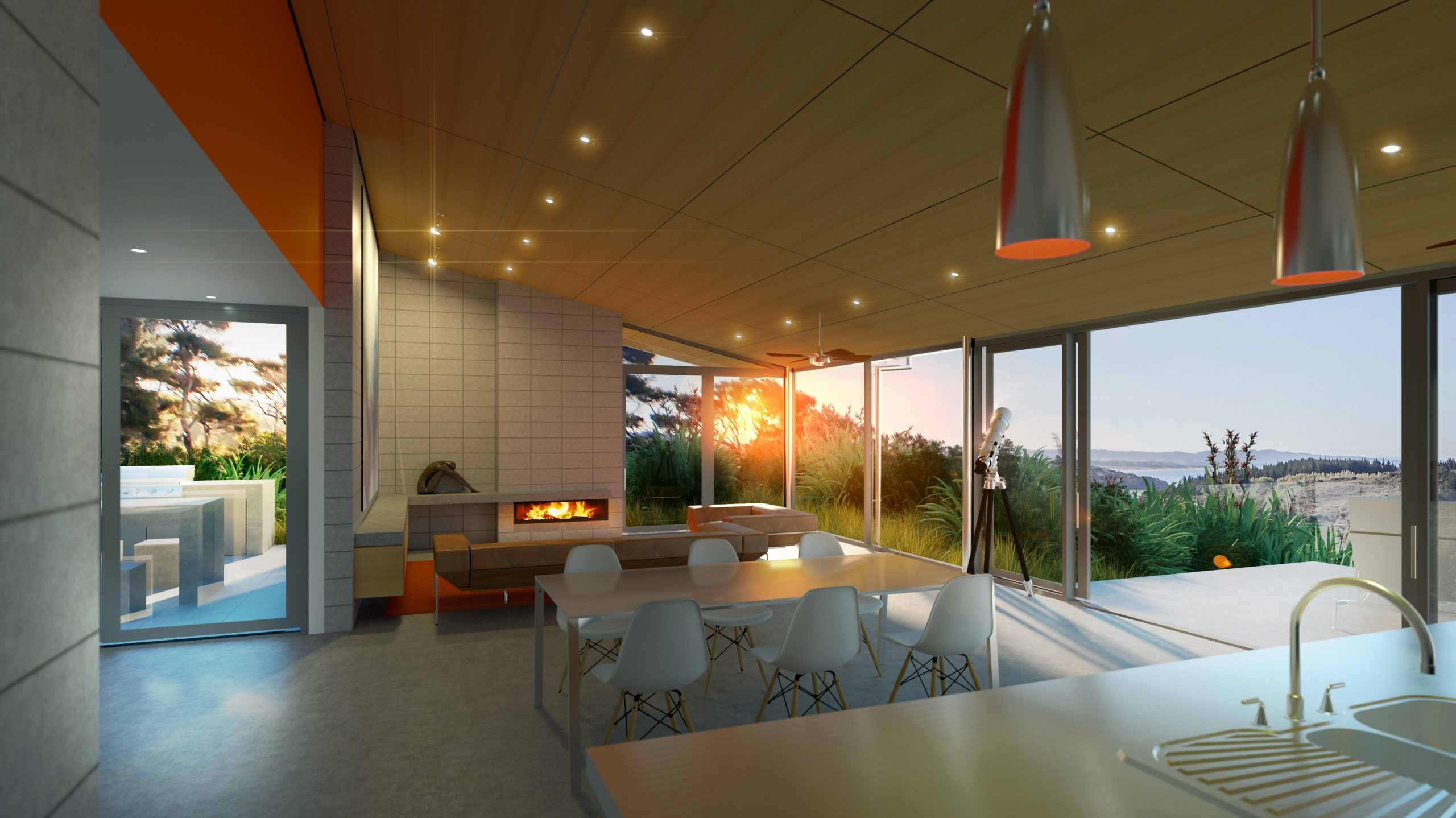Project: A 3 bedroom house overlooking Bream Bay, Northland
Client: Oborn Group Ltd
A fantastic first site on a new lifestyle subdivision under development, this project was initially intended as a visualization exercise for marketing purposes, based on a similar project by spatial designer Bret de Their.
In developing the concept, a deliberately spartan ‘batch’ aesthetic was reflected, allowing the site to dominate.
I prepared an integrated 3D BIM model of the building and surrounding terrain, vegetation etc, to a standard not only good enough for rendering, but also for the next stages of architectural work – 2D sketch plans, preliminary pricing, planning consent, and as a head start with working drawings.
Using this model, based on early views and navigable walk-throughs, the client had the confidence to make significant changes to their brief (for example, adding a bedroom, with resulting extensive re configuration of the living areas, garage etc) to test how these would work and look, then to quickly hit the ‘go button’ for updated sets of renderings from all new view angles, selected to best convey the new arrangement, and for new plans for price estimation and distribution to buyers.
This integrated BIM modeling approach is in contrast to the methods most architects and designers still use, where visualization is still seen as a completely separate exercise from the detailed drawing work that will follow.
Most still use isolated visualization models, typically showing only just enough detail for the selected camera view angle, with this work then being effectively just abandoned once the client is ‘on board’ with the scheme.
I think this is a terrible waste; any 3D modeling work should be useful from any angle, and dynamically linked to the 2D drawings, so there are not two separate versions that need to be manually updated and reconciled with every design change. Disconnected phases of work and single purpose modeling exercises like this flush away far too much extra time, effort and money. The client should be able to see the building from any angle at will, and on the fly, to quickly pick up on any important implications affecting their decision making.



